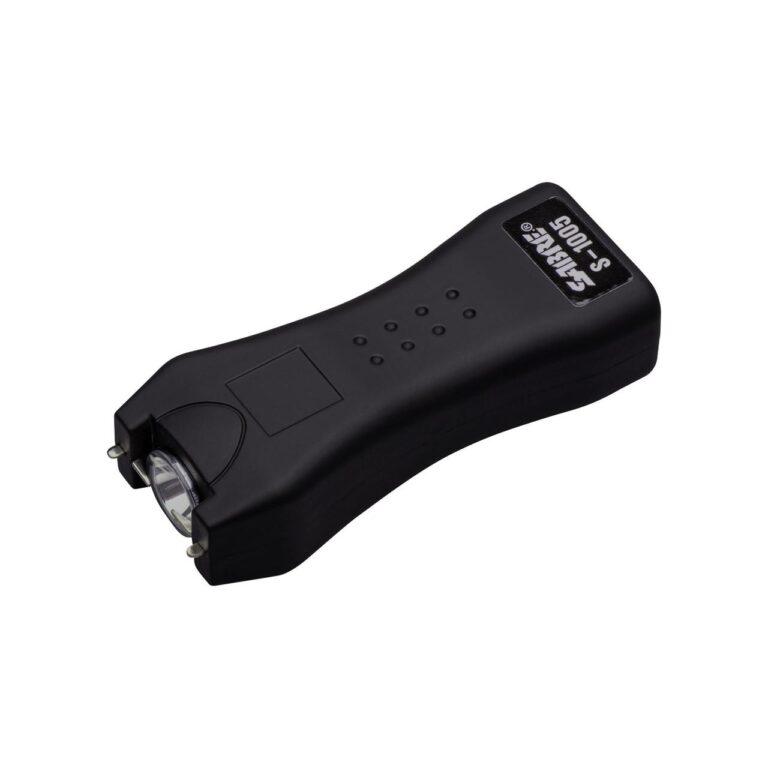Table of Contents
- Understanding the Legal Landscape Surrounding Stun Gun Ownership
- Key Risks and Legal Consequences of Using Stun Guns Improperly
- How to Ensure Compliance with Local and Federal Regulations
- Practical Tips for Responsible Stun Gun Use and Carrying Laws
- Concluding Remarks
Understanding the Legal Landscape Surrounding Stun Gun Ownership
The ownership and use of stun guns are governed by a complex mesh of state and local laws, which can vary dramatically across regions. What may be perfectly legal in one state could land you in serious legal trouble in another. Beyond state statutes, it’s critical to be aware of municipal regulations or specific restrictions in venues such as airports, schools, and government buildings, where stun guns are often prohibited regardless of state law. Understanding these nuances not only shields you from unforeseen legal consequences but also ensures that self-defense choices remain compliant with current regulations.
Key legal considerations to keep in mind include:
- Age Restrictions: Many states impose minimum age requirements for purchasing or carrying stun guns.
- Permit Requirements: Some jurisdictions require explicit permits or licenses to legally possess or carry a stun gun.
- Usage Limitations: The legal use of stun guns is often restricted to self-defense scenarios, with misuse carrying hefty penalties.
- Transport and Storage: Rules may dictate how stun guns must be stored or transported, especially across state lines.
Key Risks and Legal Consequences of Using Stun Guns Improperly
Misusing stun guns can expose individuals to serious legal and personal risks. Many jurisdictions enforce strict regulations regarding when and how these devices can be carried and deployed. Using a stun gun in a situation deemed unnecessary or excessive can result in criminal charges, including assault or battery. Beyond criminal penalties, civil lawsuits may arise from injuries caused, potentially leading to costly damages and legal fees. It’s essential to recognize that even if possession is legal in your area, improper use can carry heavy consequences.
Key risks of improper stun gun use include:
- Criminal prosecution: Facing assault charges or weapons violations for unauthorized use.
- Loss of self-defense protections: The claim of self-defense may be invalidated if force is deemed excessive.
- Injury or death liability: Potential for causing unintended harm leading to civil liability.
- Confiscation and fines: Devices can be confiscated and fines imposed for illegal possession or use.
How to Ensure Compliance with Local and Federal Regulations
Before purchasing or carrying a stun gun, it’s crucial to understand the intricate web of federal and local laws that govern their possession and use. Regulations vary significantly across states and even cities, with some areas imposing strict licensing requirements, age limits, or outright bans. Ignorance of these laws can lead to serious legal consequences, including fines, confiscation of the device, or criminal charges. To navigate this, start by consulting official government websites, local law enforcement agencies, or legal professionals who specialize in weapons laws. This proactive approach ensures your self-defense measures remain within lawful boundaries.
Additionally, always stay updated on any legislative changes by subscribing to legal alerts or joining local advocacy groups focused on self-defense rights. Here are a few key compliance tips to keep in mind:
- Verify your state’s stance: Some jurisdictions allow stun guns only for certain individuals, such as retired law enforcement or security professionals.
- Understand transport laws: Federal regulations often differentiate between carrying stun guns within state lines versus crossing state borders.
- Proper documentation: Obtain any necessary permits or carry certifications to avoid inadvertent violations.
- Safe storage practices: Secure your device in compliance with any local mandates, especially in households with minors.
Practical Tips for Responsible Stun Gun Use and Carrying Laws
Owning a stun gun comes with the responsibility to use it wisely and legally. Before carrying one, it’s essential to fully understand your local and state regulations-these laws vary significantly and can affect where and how you can legally possess or deploy your device. Always ensure that your stun gun is kept out of reach of children and never used for anything other than self-defense. Practicing proper handling and storage, such as using holsters or lockboxes designed specifically for stun devices, helps prevent accidents and unauthorized use.
To stay on the safe side when carrying a stun gun, consider the following guidelines:
- Keep documentation handy: Carry a copy of the relevant law or permit if required by your jurisdiction.
- Avoid restricted areas: Learn which public places prohibit stun guns, such as schools, government buildings, and airports.
- Stay informed about updates: Laws change frequently, so regularly review government resources to ensure compliance.
- Be discreet: Carry your stun gun in a concealed manner to avoid unnecessary attention or misunderstandings.
Concluding Remarks
In today’s world, understanding the legal landscape surrounding stun guns is more important than ever. While these devices can offer an added layer of personal security, their use and possession come with specific legal responsibilities and potential risks. Before deciding to carry a stun gun, make sure to research your local laws thoroughly and consider consulting a legal expert to avoid unintended consequences. Staying informed empowers you to make safer, smarter choices-because personal protection should never come at the expense of your peace of mind.Check Our Other Blogs
- StunGun – Your Trusted Source for Stun Guns, Laws, and Self-Defense Tips
- PepperSprayLaws – Your Trusted Resource for Pepper Spray Information
- StunGunLaws – Your Trusted Guide to Stun Gun Legality and Safety





